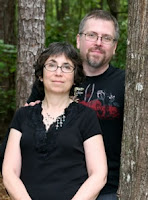As I looked over the different literary movements that were given to us as suggestions, I stumbled across what is called the New Weird. The movement became defined around 2003 and the key author was by China Mievelle. The movement engages the modern world through the vehicle of cities that are not the normal tradition fantastical cities that come out of an ideal or idea of medieval time or Byzantine cultures-they are secondary world fantasies that engage in the new world and can be political-and usually tie in with what people are doing right now. The New Weird was crystallised more recently by the popularity of China Miéville's Perdido Street Station, a transgressive horror, a type of fiction repurposed to focus on the monsters and grotesquery but not the scare itself. It is a genre that defies genre boundaries, embracing a range of writing from in-your-face horror through fantasy and science fiction to mainstream, the common element being the author's willingness to "surrender to the weird", to use the conventions of pulp fiction to locate literature, and to apply literary sophistication to genre landscapes. From what I have read, the New Weird stories are mainly set in urban secondary world settings that choose realistic, complex settings that have a combination of both science fiction and fantasy. One definition what I found while researching was by a British writer named Steph Swainston. She also is considered in the New Weird genre and this is how she described the movement.
It is incredibly eclectic, and takes ideas from any source. It borrows from American Indian and Far Eastern mythology rather than European or Norse traditions, but the main influence is modern culture – street culture – mixing with ancient mythologies. The text isn’t experimental, but the creatures are. It is amazingly empathic. What is it like to be a clone? Or to walk on your hundred quirky legs? The New Weird attempts to explain. It acknowledges other literary traditions, for example Angela Carter’s mainstream fiction, or classics like Melville. Films are a source of inspiration because action is vital. The elves were first up against the wall when the revolution came, and instead we want the vastness of the science fiction film universe on the page. There is a lot of genre-mixing going on, thank god. (Jon Courtney Grimwood mixes futuristic sf and crime novels). The New Weird grabs everything, and so genre-mixing is part of it, but not the leading role. The New Weird is secular, and very politically informed. Questions of morality are posed. Even the politics, though, is secondary to this sub-genre’s most important theme: detail. The details are jewel-bright, hallucinatory, carefully described. Today’s Tolkeinesque fantasy is lazy and broad-brush. Today’s Michael Marshall thrillers rely lazily on brand names. The New Weird attempts to place the reader in a world they do not expect, a world that surprises them – the reader stares around and sees a vivid world through the detail. These details – clothing, behaviour, scales and teeth – are what makes New Weird worlds so much like ours, as recognisable and as well-described. It is visual, and every scene is packed with baroque detail. Nouveau-goths use neon and tinsel as well as black clothes. The New Weird is more multi-spectral than gothic.
The major writers in this movement are China Mievelle and Jeff VanderMeer, along with some of the others that I have given biographies on with examples of their work. Pre-cursor or stimuli, as Jeff & Ann name it in their book "The New Weird" are M. J. Harrison, Mervyn Peake, H.P. Loveless & Michael Moorecock. Even pioneers such as J.R.R. Tolkien (Lord of the Rings Trilogy) who is famous as a fantasy writer and H.G. Wells (War of the Worlds, The Time Machine) who is considered "the father" of high science fiction, has been noted as influences on many of the authors throughout my research.
I have come to the conclusion that I am more confused now that I have read about this new genre and almost (no, not almost) wish I would have done my salon on something more concrete. I personally love watching movies that were written or directed in this style but it is not my choice of book to read. I do have to say that some of them sound interesting and one day when I have some free time, I just may download one onto my Kindle. Another thing I learned while researching this was that there are actually "trailers" for the upcoming newly released books.
So, what do you think? Is "New Weird" actually a literary movement or just a new name given to work that in my opinion, has been out there all along?



















